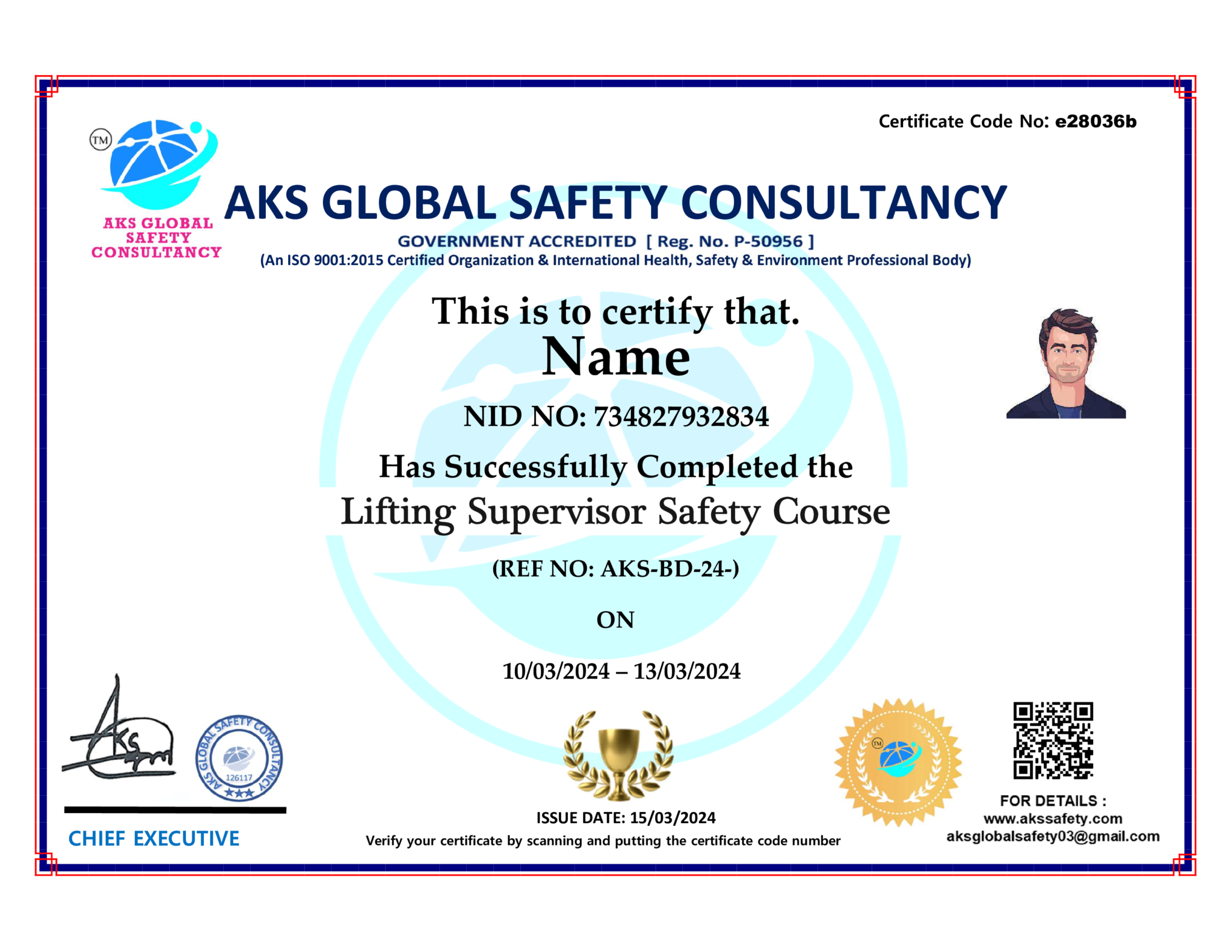Lifting and Rigging Inspectot
OVERVIEW:
ASSESSMENT:
DURATION:
MODULES:
Certificates
OVERVIEW:
This comprehensive course is designed for individuals seeking to become lifting & Rigging inspectors or enhance their knowledge of lifting equipment. Participants will learn the fundamental principles and techniques for inspecting lifting equipment, ensuring its safety and compliance with industry & Construction standards.
ASSESSMENT:
This qualification is evaluated using assessments and Multiple-Choice Questions (MCQ). To receive this qualification, the learner must pass both tests with a certain percentage.
DURATION:
The qualification has a recommended course duration of 6 days.
Note: However the course duration may be increased to meet additional learning needs if required but not reduced
MODULES:
- Introduction: Overview of lifting and hoisting and its importance in the construction and industrial industries, OSHA regulations and standards relevant to lifting and hoisting, importance of proper inspection and maintenance of lifting equipment.
- Lifting Fundamentals: Understanding the basic principles of lifting, including load weight and center of gravity, identifying and evaluating potential hazards in lifting operations, proper use and maintenance of lifting equipment.
- Inspection and Maintenance: Conducting daily and periodic inspections of lifting equipment, proper documentation and record-keeping requirements, identifying and addressing equipment defects and malfunctions.
- Lifting Planning and Procedures: Proper planning for lifting operations, procedures for lifting set up, assembly, and disassembly, procedures for entering and exiting lifting equipment.
- Load Control and Hoisting: Understanding the principles of load control and hoisting, identifying and addressing load control and hoisting hazards, proper use of hoist signals and communication.
- Emergency Preparedness and Response: Identifying and planning for potential emergency situations in lifting operations, developing and implementing emergency response plans, training workers on emergency procedures.
- Regulations and Standards: Understanding OSHA and other regulatory requirements for lifting and hoisting, identifying and addressing non-compliance issues, keeping current with changes in regulations and standards.
Certificates

